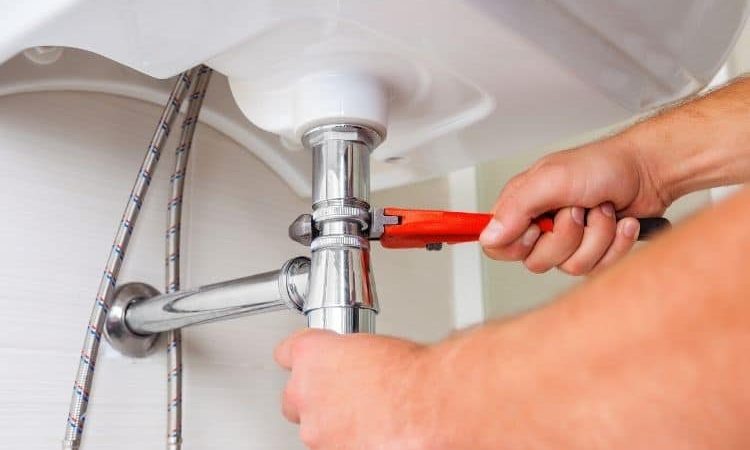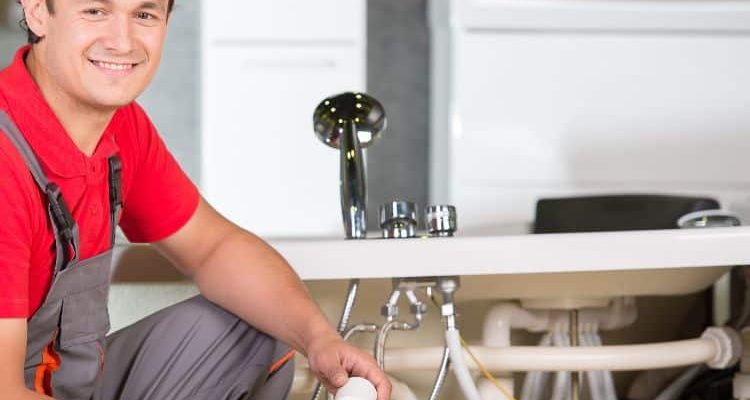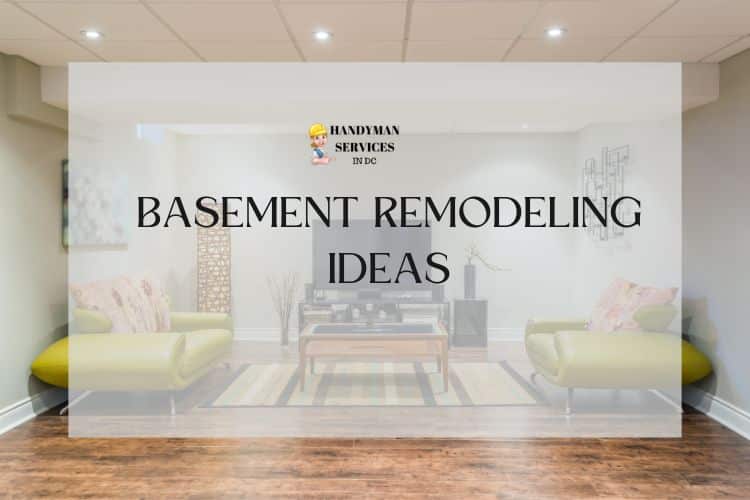Our home’s water supply is critical for many reasons. We need water to cook, clean, drink, and flush toilets. So when a plumbing leak disrupts the water supply, it can become a significant inconvenience and burden for the whole family.
Luckily, if you suspect a leak in your property, there are some telltale signs to look out for. Here are nine of the most common symptoms of a leak:
How To Find A Plumbing Leak
1. Water stains on ceilings or walls
Water stains on ceilings or walls are usually the first sign of water leakage or roofing problem.
Water stains can be caused by many problems, such as leaks, condensation, or ice dams. If you notice stains on your ceiling or walls, a professional must inspect it immediately to find the cause and correct the problem. Otherwise, the water damage could become extensive and cause severe issues for your home. Never underestimate a leak. A few drops of water might signify a more significant problem. There are a few things you can do to try to determine the cause:
- Check for any recent plumbing work that may have been done in your home. If there are any new pipes or fittings, they may be the source of the leak.
- Look for condensation on all the pipes on your property. This could indicate a more significant problem, such as a leaking pipe.
You likely have water leakage if you notice brown or yellow stains on your ceilings or walls. These stains are caused by water seeping through cracks or holes in your pipes and entering your home.
If you cannot find the source of the stains, it is best to call a licensed company to inspect your home and make the necessary repairs. Ignoring these stains can lead to severe problems, such as mold growth or structural damage. Therefore, addressing the issue immediately is essential to prevent further damage. Remember, even small leaks can become big problems if not handled early on.
2. Higher than average water bills
If you receive a higher-than-usual water bill, it could indicate that you have a leakage. A small leak from a worn faucet can waste up to 20 gallons of water daily, while a more extensive leak can waste hundreds of gallons, which will show up on your bill. Water leaks can often go undetected for months or even years, so keeping an eye on your water usage is essential.
Another common reason for higher-than-average water bills is irrigation system leaks. Leaks in irrigation systems are often hard to detect because they’re usually underground. The best way to check for leaks in your system is to have it checked by a qualified technician.
3. Water meter
A water meter is an instrument used to measure the volume of water used by a residential and commercial building. It is usually installed at the entrance of a building or a group of buildings and uses the principle of volumetric flow measurement to calculate water usage.
If you have a water leak, keep an eye on your water meter to see if it runs when no water is used in your home.
A quick way to do a water meter test is to shut off the water in your home for a couple of hours and look for any changes in the water meter. Look at the value of the meter at the beginning of the two hours and the end. If the meter doesn’t change, you probably don’t leak. If it does change, check all plumbing fixtures and pipes.
4. The sound of running water
If you hear water running when all your faucets and appliances are turned off, there’s a good chance you have a leak. The sound may be from an undetected leak in your pipes or fixtures. To find the source, check the most obvious places, such as the water heater, under sinks, and cabinets. If you cannot find the noise source, it is best to call a professional to help locate the leak.
5. Mold or mildew growth
Mold and mildew thrive in moist environments, so if you notice either one growing in your home, it could signify a leak. These growths are often found in bathrooms or kitchens, near plumbing fixtures or appliances. Check your water pipes, bathtub drain, and pipes under any sinks.
6. Peeling paint or wallpaper
Water seeping behind walls can cause the paint or wallpaper to peel away from the surface. If you see peeling paint or wallpaper, check for any evidence of water damage, such as discoloration on the walls or ceiling. You should also look for any damp spots on the floor or carpet. If you find any of these symptoms, you should call a plumber to have your home checked for leaks.
7. Foundation cracks
Foundation cracks can lead to severe problems with your home. Water can seep into the cracks and cause severe damage to the foundation and the structure of your home.. Water leaking from pipes can often seep into the soil around your home and cause the foundation to crack.
Cracks in the foundation can also cause your home to settle unevenly, leading to severe damage. If you see any gaps in your foundation, it is crucial to have them repaired as soon as possible.
8. Soggy spots in your yard
Soggy spots in your yard are another sign that you may have a leak. Water seeps from pipes underground can often seep to the surface and cause these wet patches. You may have a broken pipe or head if the water comes from a sprinkler system. If you think this might be the case, contact your local irrigation specialist for help.
9. Inspect your roof
Your roof is one of the most critical parts of your home, so keeping it in good shape is essential. One way to do this is to inspect it regularly for water leaks.
If you notice any visible water damage on your ceiling or walls, it’s a good idea to investigate further. You may need to call a professional roofer to come and take a look if you have roof leaks, but it’s better to be safe than sorry.
How to tell if the leak is indoor or outdoor?
Outdoor leaks are often easier to spot as they may be visible on the exterior of your home. Indoor water pipe leaks, on the other hand, may be hidden behind walls or under floors and can be more challenging to detect.
There are a few leak detection tactics you could use to tell if you have an indoor or outdoor leakage:
Thermal camera:
If you suspect you have an indoor leak, using a thermal camera can be a helpful way to locate it. Thermal cameras can detect temperature differences in your home, indicating a leak.
Water meter:
Checking your water meter can also help determine whether you have indoor or outdoor plumbing leaks. If the meter is reading higher than average, you likely have a leak somewhere in your home.
Visual inspection:
A visual inspection of your home can also help you spot evidence of an indoor or outdoor leaks. For example, if you notice visible signs on your walls or ceiling, there’s likely a leak somewhere in your plumbing system.
Inspect the exterior of your home:
If you see any water pooling on the ground around your home or dripping from the gutters, you will likely have an outdoor plumbing leak.
Once you’ve determined whether the leak is indoor or outdoor, you can begin to investigate the source of the leak.
The most common plumbing fixture that can leak in your house
Water Heater
If you have a water heater, it’s essential to check it regularly for any evidence of a water leak. Over time, the tank can develop rust or corrosion, leading to leaks. If you notice any water pooling around your water heater, it’s best to call a professional plumber to inspect it and make the necessary repairs.
Sinks
Leaks can often occur at the plumbing fixtures in your homes, such as sinks and faucets. A leaky sink can waste a significant amount of water, so fixing them as soon as possible is essential. You’ll need to replace the washer or O-ring to fix a leaky sink. You may also need to tighten the fixture’s packing nut.
Toilets:
Toilet tanks are another common source of plumbing leaks. A leaky toilet can waste a lot of water, so fixing it as soon as possible is essential. Toilet leaks are often caused by a faulty flapper or fill valve. Replacing these parts is usually a simple fix.
Having a Leak?
Leaking pipes:
Leaks can also occur in the pipes that supply water to your home. These leaks are often harder to detect as they’re hidden from view.
Plumbing leaks can often be prevented by regularly checking your plumbing fixtures and pipes for signs of wear or damage. If you notice any leaks, fixing them immediately is essential to avoid expensive water damage.
Appliances:
Your appliances, such as dishwashers and washing machines, can leak over time. It’s essential to check them regularly for any signs of wear or damage indicating a disconnection from the drain.
What to do when you have a water leak?
If you have a water leak, you should first turn off the water in your home. This will help prevent any further damage. Once the water is turned off, you can start to assess the damage and determine what needs to be repaired. If the leak is minor, you may be able to fix it yourself. However, if the damage is extensive, it’s best to call a professional plumber to make the necessary repairs.
Leaks can often be prevented by regularly checking your plumbing fixtures and pipes for any signs of wear or damage. If you notice any leaks, fixing them as soon as possible is vital to avoid expensive water damage.
How do prevent plumbing leaks?
There are a few things you can do to help prevent plumbing leaks in your home:
- Check your plumbing fixtures and pipes regularly for any wear or damage.
- If you notice any leaks, fix them as soon as possible.
- Be mindful of how much water you’re using in your home. Excess water usage can often lead to leaks.
- Ensure your appliances, such as dishwashers and washing machines, are adequately connected to the drainage system in your home.
- Check the exterior of your home for any signs of water leaks, such as water pooling or dripping from gutters.
Following these simple tips can help prevent plumbing leaks in your home.
summary:
Detecting plumbing leaks can be tricky, but a few telltale signs can help you identify a problem. Water pooling on the ground or dripping from gutters indicates an outdoor plumbing leak. Toilets, sink, and appliances can also leak, wasting water and causing damage over time. Regularly checking your home is the best way to prevent plumbing leaks. If you find a leak, fixing it as soon as possible is essential to avoid further damage.









